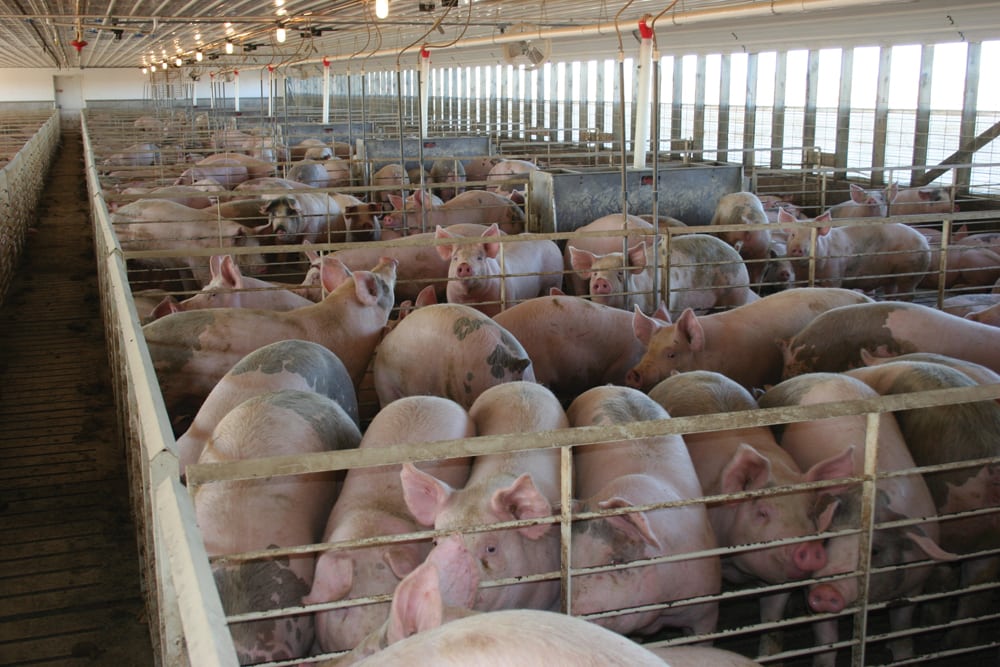Porto Alegre, June 15, 2023 – Challenging year for US pig farming. Live animal prices are weak with the increase in domestic supply, the cost of nutrition remains at a high level, and the demand for pork is not evolving satisfactorily. The first point to be raised is the difficult economic environment, with inflation weighing on consumer choice in retail. In addition, the US interest rate is at the highest level in recent years, which ends up impacting credit and demand.
According to reports, despite increased pork supply, retail prices have not consistently declined. The lows have been most evident in retail so far. The attached graph shows the evolution of pork carcass prices over the last 12 months. At the end of May 2023, they were at USD 75.69 per cwt, 32.15% lower than the USD 111.56 per cwt registered in the same period of 2022. The decline in live animals decreased by 27.8% in the same period, from USD 86.47 to 62.43 per cwt. The data came from reports from the US Department of Agriculture (USDA).
It is worth pointing out that beef is on an upward trend in the US market, which theoretically would lead a portion of households to increase purchases of pork and chicken, however, high and persistent inflation ends up affecting demand for meat and other foods. The expectation is that at some point in the future retail prices will retreat and promote a more favorable environment for the reduction of stocks.
The USDA “Livestock, Dairy, and Poultry Outlook” report released in May points out that the estimated slaughter of pigs inspected by the US federal government was at 42.1 mln head in the first quarter of 2023, up 1.4% from 41.5 mln head in the same period last year.
According to the report, losses per head of live pigs amounted to nearly USD 28 on a similar basis per month. Most farmers are price takers and cannot pass on higher feedstuff costs. When the pig reaches the ideal weight for slaughter, farmers opt for sale, considering that each day the pig stays on the farm the loss grows. Another component that can weigh on the cost structure is the decision on animal welfare in California. In May, the US Supreme Court confirmed a law requiring that pork sold in the state must come from breeders kept in open pens of at least 24 square feet. The decision requires that many producers renovate their facilities.
The new crops of corn and soybeans should lead to a decrease in the cost of feedstuff, which will bring some relief, barring a good climate evolution in the US Midwest.
The current adverse market scenario will end up removing less efficient farmers from the activity and lead big producers to adopt strategies to reduce matrices and births, which will result in a lower supply of pigs and pork in 2024, even if in a measured way. The USDA May report forecasts the total US pork production in 2023 at 27.38 bln pounds, up 1.4% from last year. For 2024, total pork production is expected to hit 27.35 bln pounds, a slight decline. Domestic demand will be a key factor for pork chain prices in 2024. Beef will continue at high levels, which could help. Economic indicators and the dollar should be monitored closely in order to understand the evolution of demand.
US pork exports at a strong pace in the first quarter of 2023
According to USDA data, March exports reached 608 mln pounds, an increase of 25% over the same month last year. Strong March shipments took Q1 exports to nearly 1.668 bln pounds, 9% higher than in the same period of 2022 (1.529 bln pounds). Only Mexico and Japan accounted for more than half of the export volume in the first quarter, as can be seen in the attached table. The factors that boosted exports in the first quarter were low pork prices and a weaker dollar compared to the second half of 2022.
The “Livestock, Dairy, and Poultry Outlook” report forecasts 2023 US exports at 6.50 bln pounds for the year, up 2.6% from 2022 shipment. Exports in 2024 were estimated at 6.32 bln pounds due to the expectation of higher pork prices.
Follow the Safras Agency on our website. Also follow us on our Instagram and Twitter and stay on top of the main agribusiness news!
Copyright 2023 – Grupo CMA

